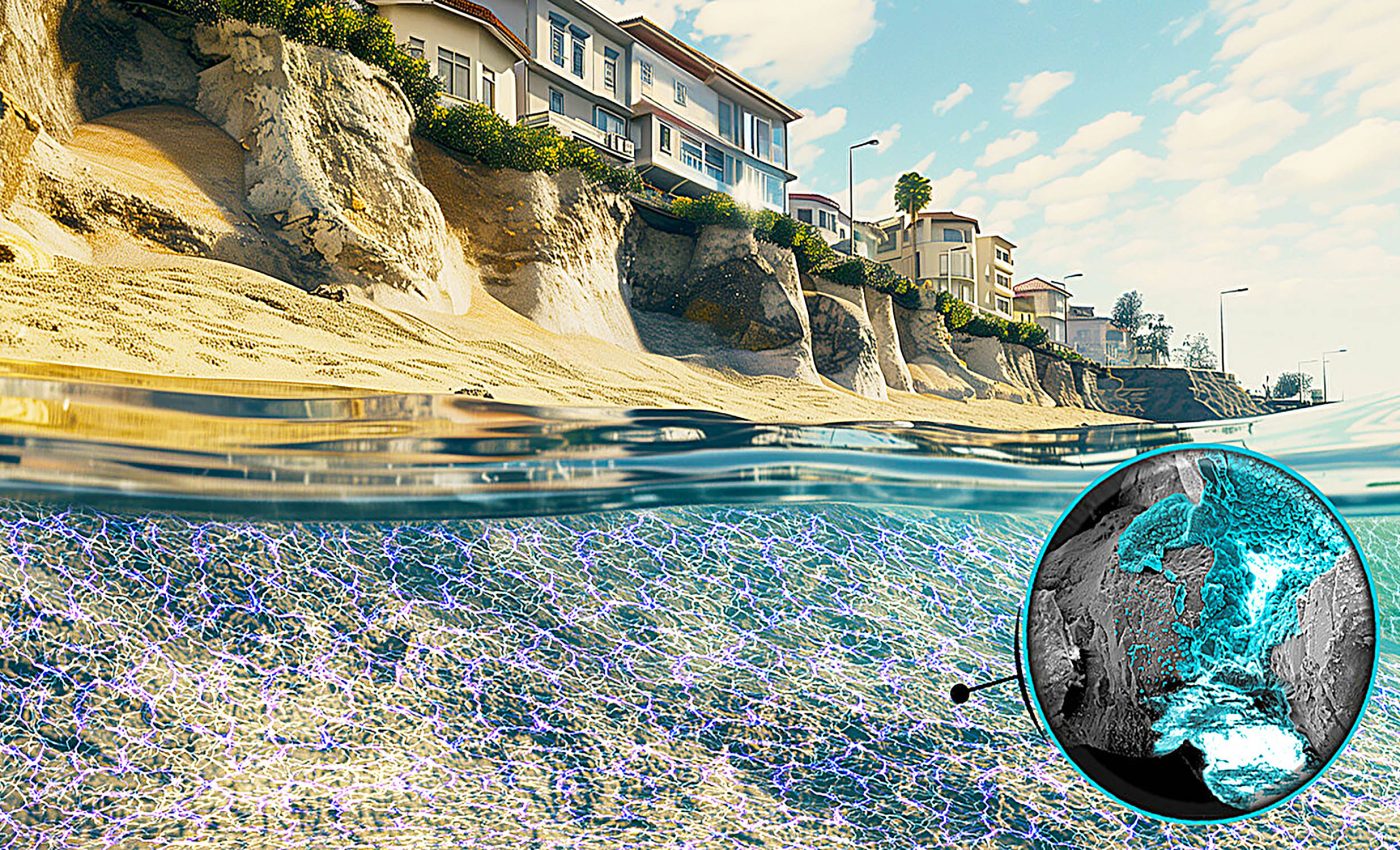
Fighting coastal erosion with a "shockingly" simple solution, and it actually works
Coastal communities can’t catch a break. Waves pound the shores, storms grow fiercer with the changing climate, and rising seas nibble away at the sand supporting coastal properties around the world.
Standard defenses – sea walls, trucked-in sand, and injections of cement – buy time but rarely offer a lasting fix. Something simpler and sturdier is needed before more beaches slip beneath the surf.
Jolting coastal sand with electricity
Now, engineers have found that a trickle of electricity – just a couple of volts, about what a toy flashlight uses – can lock loose coastal sand into a rock-like mass.
The current coaxes dissolved minerals already floating in seawater to crystallize between grains of sand, gluing them together almost instantly.
In lab tests, the sand stayed put after only a few days of stimulation and showed strength on par with quarried stone.
Clams and mussels turn seawater’s calcium into sturdy shells without breaking a sweat. Researchers copied that natural chemistry, but replaced metabolic energy with an external battery.
At 2-3 volts, calcium carbonate forms; nudge the voltage to 4 volts and magnesium hydroxide and hydromagnesite join the mix.
These minerals are tougher than standard concrete and can withstand repeated wetting, drying, and salt spray.
Spark of creativity
“Over 40% of the world’s population lives in coastal areas,” explained Alessandro Rotta Loria of Northwestern University, who led the study. “Because of climate change and sea-level rise, erosion is an enormous threat to these communities.”
He explained that erosion of coastal sand already causes “billions of dollars in damage per year worldwide” through the loss of land and the disintegration of infrastructure.
Current approaches to mitigate erosion involve building protection structures or injecting external binders into the subsurface.
“My aim was to develop an approach capable of changing the status quo in coastal protection – one that didn’t require the construction of protection structures and could cement marine substrates without using actual cement,” Rotta Loria continued.
“By applying a mild electric stimulation to marine soils, we systematically and mechanistically proved that it is possible to cement them by turning naturally dissolved minerals in seawater into solid mineral binders – a natural cement.”
Shortcomings of familiar fixes
“Sea walls, too, suffer from erosion,” Rotta Loria noted. “Over time, the sand beneath these walls erodes, and the walls can eventually collapse.”
He explained that many protection structures are built from large stones that cost millions of dollars per mile.
“However, the sand beneath them can liquefy because of several environmental stressors,” he said. “These big rocks are swallowed by the ground beneath them.”
Injecting cement and other binders into the ground has a number of irreversible environmental drawbacks. According to Rotta Loria, it also typically requires high pressures and significant amounts of energy.
Numbers that matter
A 2020 analysis by the European Commission’s Joint Research Centre warned that nearly 26 percent of Earth’s beaches could disappear by 2100 if nothing changes.
Traditional chemical grouting can cost as much as $70 per cubic yard, yet it still cracks under relentless waves. Electrically cemented sand costs roughly $4 to $8 per cubic yard, slashing expenses while promising decades of stability.
“After being treated, the sand looks like a rock,” Rotta Loria said. “It is rigid and solid, instead of granular and incohesive. The minerals themselves are much stronger than concrete, so the resulting sand could become as strong and solid as a sea wall.”

Researchers tested everything from common quartz beach sand to iron-rich grains collected near volcanoes.
Each type bonded firmly once the current flowed. Longer stimulation periods thickened the mineral bridge, but the first gains arrived quickly.
“We have noticed remarkable outcomes from just a few days of stimulation,” Rotta Loria enthused. “Then, the treated sand should stay in place, without needing further interventions.”
Sea-life-friendly coastal sand
Sea creatures won’t notice the gentle buzz coursing through the seabed. And if planners change their minds, flipping the battery’s poles dissolves the mineral glue.
The minerals form because we are locally raising the pH of the seawater around cathodic interfaces. If you switch the anode with the cathode, then localized reductions in pH dissolve the previously precipitated minerals.
This technique offers a wide range of practical uses. It can be applied to reinforce the seabed beneath sea walls, stabilise sand dunes, and secure areas with loose or shifting soil.
Beyond that, it can strengthen breakwaters, marine foundations, and a variety of other coastal structures. Overall, the method provides numerous opportunities to enhance coastal protection.
Field trials on real beaches are up next. If the results match the lab’s promise, future coastline projects might swap hulking barriers for a low-voltage power supply and a few well-placed electrodes.
With millions of people living a stone’s throw from high tide, a solution that turns shifting sand into steadfast rock – using the ocean’s own minerals – couldn’t come at a better time.
The full study was published in the journal Communications Earth & Environment.
—–
Like what you read? Subscribe to our newsletter for engaging articles, exclusive content, and the latest updates.
Check us out on EarthSnap, a free app brought to you by Eric Ralls and Earth.com.
—–














